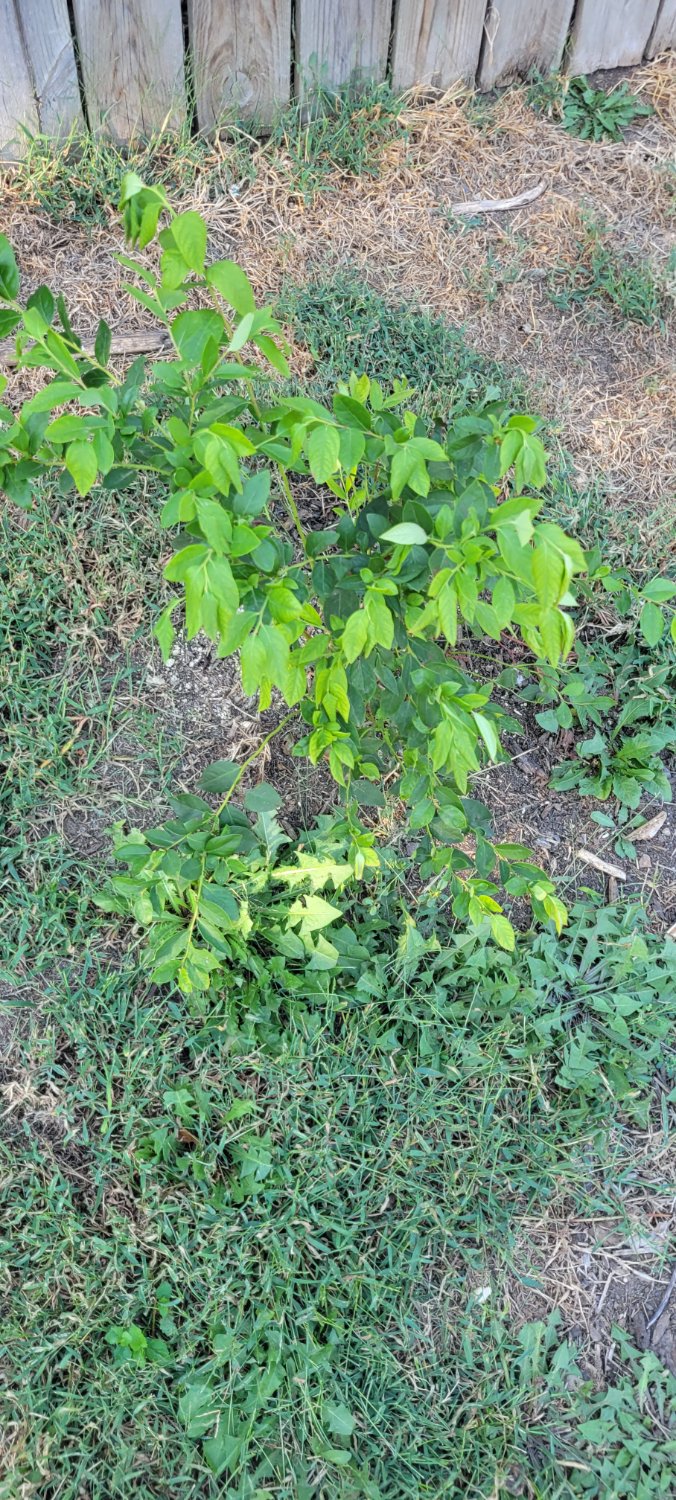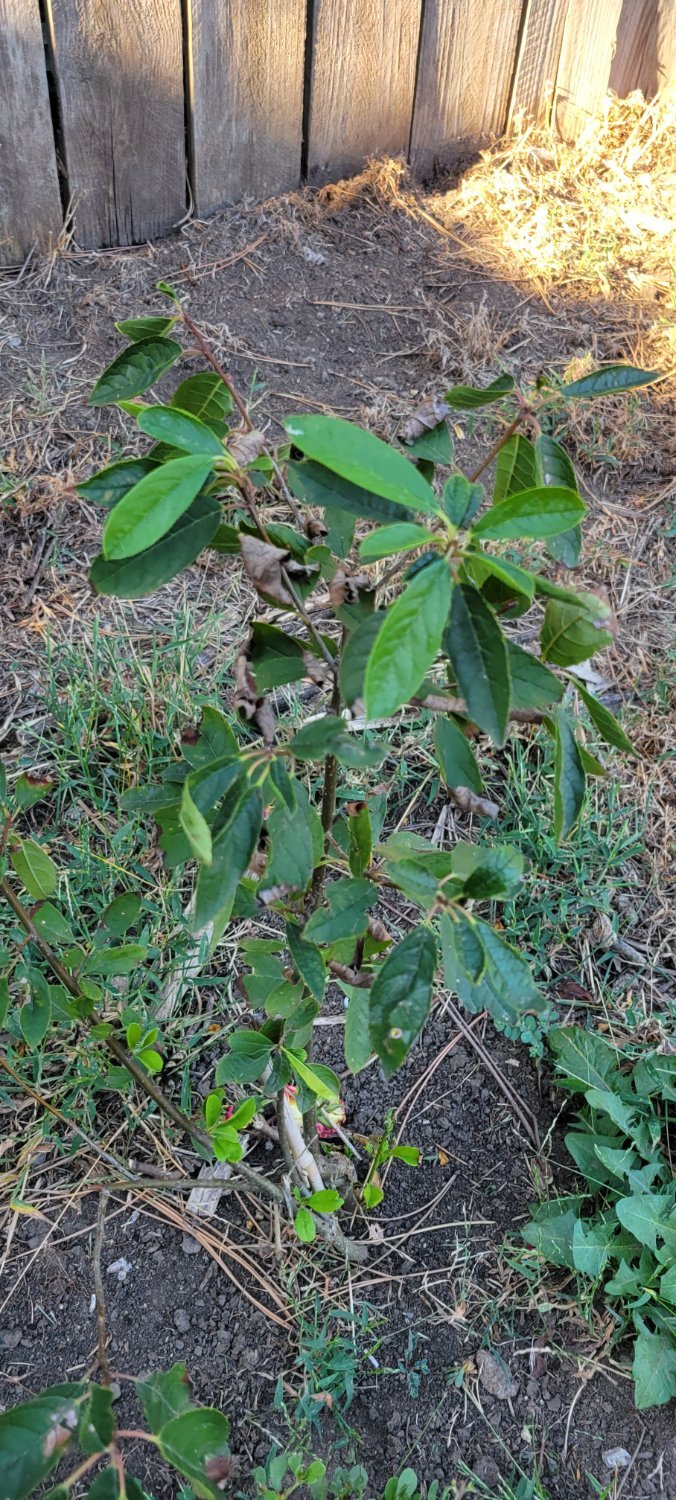I've been having trouble with several of my plants the last couple of years. I've planted almost 4 blueberry bushes, grapevine and some winterberries that do well for several months then seem to start growing very slow and doing poorly.
Our soil is more of a silty soil that doesn't drain well so I did fill the holes in with good potting soil with compost and covered with a thin layer of the silty soil and try to water about once a week. The last year I had 3 blueberry bushes that I planted early spring that put out some new growth and then started to grow very slow and later died In early fall and didn't come back the next year. I've tried to fertilize and add gardening Sulphur to them to help acidity the soil but no matter what I do everything slowly starts to die. I've noticed this year the leaves on the grapevines and blueberries appears to have chlorosis and the winterberries' leaves are turning brown and curling up. It's still ~90 degrees out so I doubt anything should be going dormant yet (I live in zone 5b). I even tried to buy special blueberry fertilizer to make sure I wasn't missing anything important but I'm still having issues.
Here is the blueberry bush:

The raspberries:

And one of the winterberry bushes:

Does this look like iron defiency or potentially some other sort of issue? At this point I'm considering getting my soil tested but if anyone has any advice let me know.
Have you tested your soil pH? Blueberries often won't grow well except in very acidic soil. Sulphur can help at the margin but it won't turn a fully alkaline soil acidic. They also prefer good drainage, which it sounds like you may not have. Adding organic material to the planting hole can make drainage issues worse because the good drainage in the hole simply becomes an underground puddle when the water reaches the un-amended soil below. It's better to cover the soil with organic material and allow it to incorporate naturally (or you can do light tillage to work it in at the beginning, but this doesn't work well after things have been planted. It also damages the existing soil structure). I would add some compost over the whole planting area, then a thick layer of wood chips (at least 4 inches deep, but less at the base of the plants) to help keep the soil moist and cool. Also, remove those weeds since they are competing with your plants.
The other plants should be OK as long as they have enough moisture and drainage. It's possible you aren't watering enough as the soil looks fairly dry to me. You said you water once per week--how much volume? Newly planted things generally need more consistent moisture until the roots establish. It won't matter if the deep soil is moist if the roots can't reach there yet. Alternatively, it's possible if you live in a wet climate and have poor drainage that once a week is too much. You want the soil around the roots to be moist but not soggy or drippy for more than a short period.
The first thing I always tell people when troubleshooting is the probe into the soil and get a sense of how wet or dry it is. Almost all plants prefer moist soil--not too wet, not too dry. Often too much moisture and not enough can cause similar symptoms, so it's important to get a sense of what's happening below ground before you change your watering strategy.